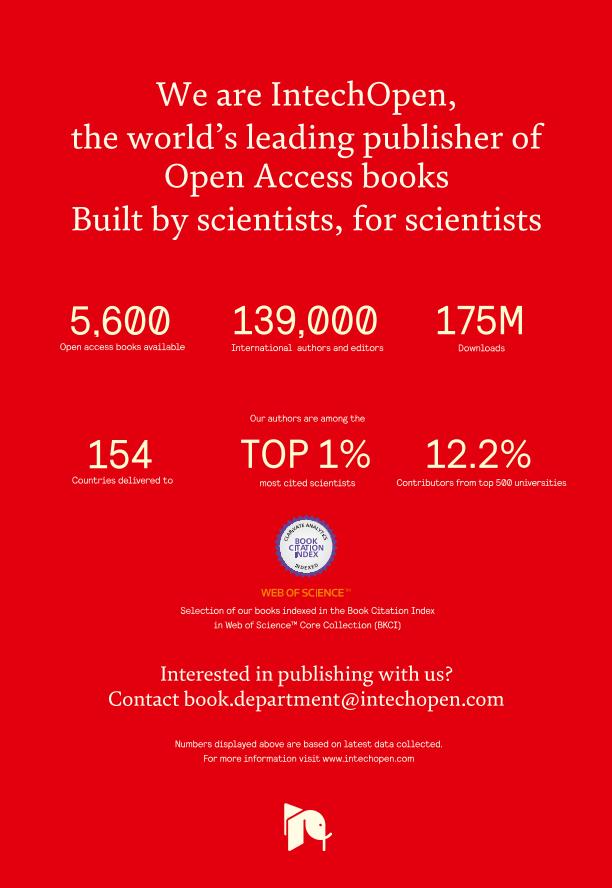Mostrar el registro sencillo del ítem
dc.contributor.author
Olmedo, Daniel Gustavo

dc.contributor.author
Tasat, Deborah
dc.contributor.author
Duffó, Gustavo Sergio

dc.contributor.author
Cabrini, Rómulo
dc.contributor.author
Guglielmotti, Maria Beatriz

dc.contributor.other
Bensalah, Nasr
dc.date.available
2021-03-08T13:08:15Z
dc.date.issued
2012
dc.identifier.citation
Olmedo, Daniel Gustavo; Tasat, Deborah; Duffó, Gustavo Sergio; Cabrini, Rómulo; Guglielmotti, Maria Beatriz; Systemic and Local Tissue Response to Titanium Corrosion; IntechOpen; 2012; 93-118
dc.identifier.isbn
978-953-51-0275-5
dc.identifier.uri
http://hdl.handle.net/11336/127705
dc.description.abstract
No metal or alloy is completely inert in vivo. Whether noble or passivated, all metals willsuffer a slow removal of ions from the surface, largely because of local and temporalvariations in microstructure and environment. The potential risk of corrosion and thepossible detrimental consequences of corrosion byproducts to tissues are issues of clinicalimportance. The biologic effect of corrosion is a public health concern for the community of patients who have a prosthesis (orthopedic and/or dental), since these prostheses remain inside the body over long periods of time. Evaluation of tissues around metallic devices is important since the presence of ions/particles and their potential local biological effects might affect implant outcome.Corrosion is one of the possible causes of implant failure after initial success. Metalcorrosion can affect close contact between the implant and the bone tissue(osseointegration).The issue of corrosion is not only a local problem since particles resulting from this processcould migrate systemically and deposit in target organs. The long term effects of thesedeposits are yet to be clarified. Mineral elements play a critical role in the physiology andpathology of biological systems. Titanium is a nonessential element; thus, the presence oftitanium in the body, titanium biokinetics, and the potential biological effects of titanium areof great interest to researchers. “In situ” degradation of a metallic implant is an unwanted event since it alters the structural integrity of the implant. Implant manufacturers must attempt to develop methods that reduce the diffusion of metal into the tissues in order to minimize the deleterious effects of corrosion.We believe further investigation, in particular long-term research, is necessary to advance inthe understanding of the factors involved in implant corrosion and establish basicguidelines for their use in clinical implantology. Handling and controlling corrosion of aSystemic and Local Tissue Response to Titanium Corrosion 109biomedical implant is essential from a biological, sanitary, metallurgic, economic, and socialviewpoint. Lastly, it is important to highlight that the adverse effects of corrosion described in thepresent chapter will not invariably occur in all patients with implants since biologicalresponse varies among individuals.
dc.format
application/pdf
dc.language.iso
eng
dc.publisher
IntechOpen

dc.rights
info:eu-repo/semantics/openAccess
dc.rights.uri
https://creativecommons.org/licenses/by-nc-sa/2.5/ar/
dc.subject
BIOMATERIALS
dc.subject
TITANIUM
dc.subject
PITTING CORROSION
dc.subject.classification
Otras Ingeniería de los Materiales

dc.subject.classification
Ingeniería de los Materiales

dc.subject.classification
INGENIERÍAS Y TECNOLOGÍAS

dc.title
Systemic and Local Tissue Response to Titanium Corrosion
dc.type
info:eu-repo/semantics/publishedVersion
dc.type
info:eu-repo/semantics/bookPart
dc.type
info:ar-repo/semantics/parte de libro
dc.date.updated
2020-08-19T19:34:24Z
dc.journal.pagination
93-118
dc.journal.pais
Estados Unidos

dc.journal.ciudad
New York
dc.description.fil
Fil: Olmedo, Daniel Gustavo. Universidad de Buenos Aires. Facultad de Odontología. Cátedra de Anatomía Patológica; Argentina. Consejo Nacional de Investigaciones Científicas y Técnicas. Oficina de Coordinación Administrativa Houssay; Argentina
dc.description.fil
Fil: Tasat, Deborah. Universidad de Buenos Aires; Argentina. Universidad Nacional de San Martín. Escuela de Ciencia y Tecnología; Argentina
dc.description.fil
Fil: Duffó, Gustavo Sergio. Consejo Nacional de Investigaciones Científicas y Técnicas. Oficina de Coordinación Administrativa Houssay; Argentina. Universidad Nacional de San Martín. Escuela de Ciencia y Tecnología; Argentina. Comisión Nacional de Energía Atómica; Argentina
dc.description.fil
Fil: Cabrini, Rómulo. Universidad de Buenos Aires. Facultad de Odontología. Cátedra de Anatomía Patológica; Argentina. Comisión Nacional de Energía Atómica; Argentina
dc.description.fil
Fil: Guglielmotti, Maria Beatriz. Universidad de Buenos Aires. Facultad de Odontología. Cátedra de Anatomía Patológica; Argentina. Consejo Nacional de Investigaciones Científicas y Técnicas. Oficina de Coordinación Administrativa Houssay; Argentina
dc.relation.alternativeid
info:eu-repo/semantics/altIdentifier/url/https://www.intechopen.com/chapters/33623
dc.relation.alternativeid
info:eu-repo/semantics/altIdentifier/doi/http://dx.doi.org/10.5772/32500
dc.conicet.paginas
178
dc.source.titulo
Pitting Corrosion
Archivos asociados
